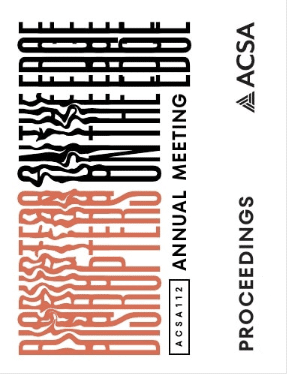Author(s): Alexander Timmer
Deploying research on the role of evaporative cooling utilizing pervious concrete, this project attempts to formalize the relationship between module form, aggregate form, and evaporative capacity through a physical installation. Utilizing passive environmental principles, in which the performance of the wall is dictated by its environment, in this case the access to rainwater and wind, the installation is always “on.” Intended as a system which could extend in all directions infinitely, utilizing Stan Allen’s concept of the field condition, the physical installation is understood to be a smaller chunk of a larger possibility. Less of an enclosure and more of a generator of microclimate, this project attempts to connect issues of modularity constructability and microclimate. This relationship between form and performance is a dialectic expression of systems thinking writ large in its design. The rules which dictate aggregation also impact the evaporative performance of the elements. The wall consists of previous concrete precast elements which are tapered in plan and angled in section to produce variation through their aggregation. Their shape allows for the wall to turn depending on how it is stacked. Mirroring elements will produce a straight wall while repeating elements turn the wall, creating small spaces. These smaller spaces will necessarily experience greater cooling effects. The wall is doused in rainwater which infiltrates deep into the wall through the pervious concrete. As wind and other natural ventilation processes push through the previous medium, evaporation is encouraged, cooling the concrete mass. The cooling of the wall produces a microclimate that is a byproduct of the ambient air temperature and humidity. The evaporative capacity of the wall is limited by that same air temperature and relative humidity. Thermal cameras and temperature sensors are used to document the heating and cooling of the wall throughout the year as it experiences different levels of precipitation and ambient environmental conditions. Testing of the wall is also completed with hand applied water. With interest in passive environmental strategies, the pervious concrete grotto used modular concrete elements to produce a microclimate through water evaporation. It seeks to produce the cooling experience of a grotto, which acts as a datum to the ambient air temperature and relative humidity. It makes legible one possible expression of the relationship between passive material performance and the form of architecture.
https://doi.org/10.35483/ACSA.AM.112.8
Volume Editors
Germane Barnes & Blair Satterfield
ISBN
978-1-944214-45-6

 Study Architecture
Study Architecture  ProPEL
ProPEL 
